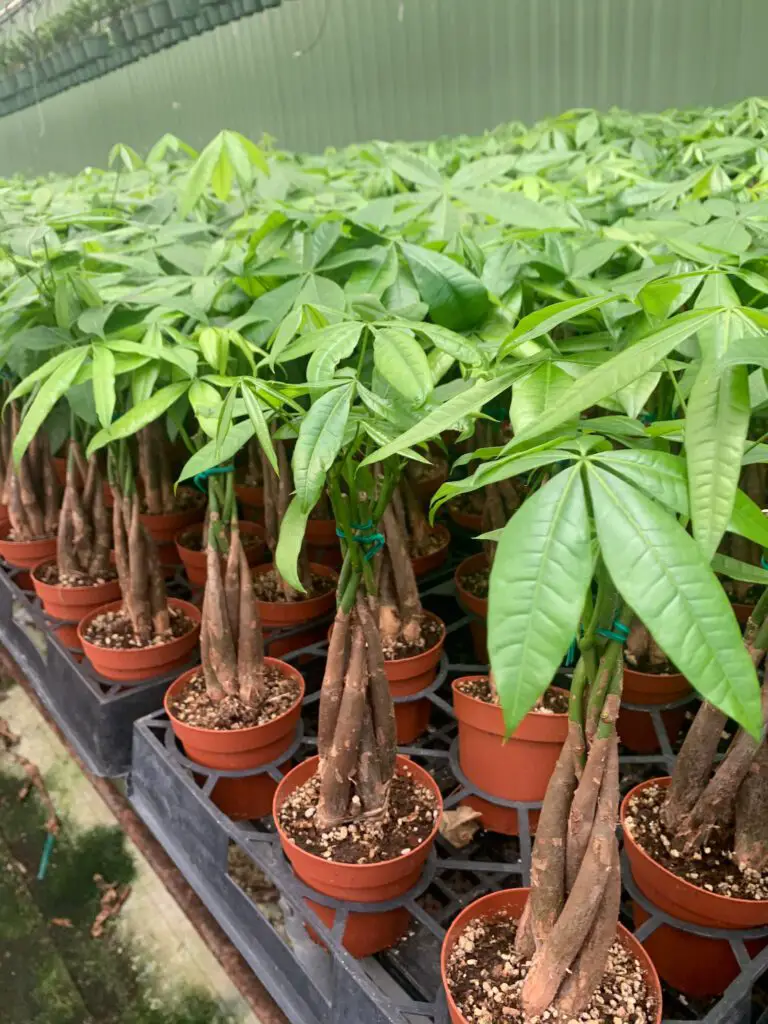How to Get Rid of Japanese Beetles
Table of Contents
Identifying Japanese Beetles: Recognizing the pest causing damage to your plants.
Japanese beetles (Popillia japonica) are a common pest that can cause significant damage to your plants and garden. These beetles are native to Japan but have become widespread in North America, particularly in the eastern United States. They were first discovered in New Jersey in 1916 and have since spread to many states.
Identifying Japanese beetles is crucial for effective pest management. These beetles are easy to recognize due to their distinct appearance. Adult Japanese beetles are about half an inch long and have shiny metallic green bodies with copper-colored wings. They also have small white tufts of hair along the sides of their bodies, which are visible when they fly. Their larvae, known as grubs, have a C-shaped body and are creamy white with a darker head. Identifying these grubs can be useful in identifying the presence of Japanese beetles in your soil. By familiarizing yourself with the appearance of Japanese beetles at different stages of their life cycle, you can take the necessary steps to protect your plants and maintain a healthy garden.

Understanding the Life Cycle: Learning about the different stages of Japanese beetles and their behavior.
The life cycle of Japanese beetles (Popillia japonica) is an intricate process that spans approximately one year. Understanding the different stages of their life cycle and their behavior is crucial in effectively managing these pests in your garden.
Japanese beetles have four distinct life stages: egg, larva, pupa, and adult. The adult beetles emerge from the soil in early summer, usually around June, and begin to mate and lay eggs. These eggs are small, oval-shaped, and white in color, typically laid in clusters of 1 to 5 inches deep in the soil. Each female can lay up to 60 eggs during her lifespan.
After about two weeks, the eggs hatch into larva, commonly known as grubs. The grubs have a C-shaped body and are creamy-white with a brown head. They feed on grass roots, organic matter, and plant roots, causing damage to lawns and gardens. During this larval stage, which typically lasts for 9 to 10 months, the grubs go through three instars, or growth phases, before transforming into pupae.
In the pupal stage, the grubs encapsulate themselves in an oval-shaped cocoon within the soil, where they develop into adult beetles. This transformation usually takes around two weeks. Once the adult beetles emerge from the pupal stage, they feed on the leaves and flowers of various plants, causing extensive damage. They are most active during warm, sunny days and are attracted to plants with shiny leaves and bright-colored flowers. The adult beetles live for approximately 30 to 45 days, during which time they mate, lay eggs, and continue the life cycle.
By familiarizing yourself with the life stages and behavior of Japanese beetles, you can take proactive steps to manage their populations effectively and protect your garden from their destructive activities. The next section will delve into signs of infestation, allowing you to recognize if your garden is indeed being invaded by these voracious pests.
Signs of Infestation: Identifying the telltale signs that your garden is infested with Japanese beetles.
Japanese beetles are a destructive pest that can wreak havoc on your garden if left unchecked. Fortunately, there are certain telltale signs that can help you identify if your garden is infested with these pests. One common indication is the presence of skeletonized leaves, where the beetles feed on the tissue between the veins, leaving behind a lacy pattern. Additionally, you may notice irregular holes in the leaves, as the beetles tend to chew on the edges, creating a jagged appearance.
Another noticeable sign of Japanese beetle infestation is the accumulation of the beetles themselves. These shiny, metallic green insects with copper-colored wings can often be seen congregating on plants, feeding on blossoms, foliage, and fruits. Their presence becomes particularly prominent during sunny days when they are most active. Furthermore, as Japanese beetles undergo larval stages in the soil, you may encounter large grubs resembling white C-shaped larvae while tilling or digging in your garden. These grubs can cause damage to your plants’ root systems, leading to wilting or yellowing of leaves.

Prevention Techniques: Implementing strategies to prevent Japanese beetles from invading your garden.
Prevention is key when it comes to managing Japanese beetles and protecting your garden from their voracious appetite. By implementing effective strategies, you can minimize the risk of an invasion and maintain the health and beauty of your plants.
One of the most basic prevention techniques is to create physical barriers. Covering vulnerable plants with row covers or netting can prevent adult beetles from landing and feeding on them. These protective barriers act as a shield, keeping the beetles at bay while allowing sunlight, water, and air to reach your plants. In addition to physical barriers, you can also consider planting companion plants that repel Japanese beetles, such as garlic, chives, and catnip. These aromatic plants release scents that deter the beetles and help to keep them away from your cherished garden.
Another effective prevention strategy is maintaining a healthy and well-maintained garden. Japanese beetles are attracted to weak and stressed plants, so keeping your garden in optimal condition can make it less appealing to these pests. Regular watering, proper fertilization, and adequate sunlight will promote the vigor and resilience of your plants, making them less susceptible to beetle damage. Additionally, removing dead or dying plants, as well as fallen leaves and debris, can help eliminate potential breeding grounds for Japanese beetles and prevent them from establishing a foothold in your garden. By adopting these prevention techniques, you can greatly reduce the risk of a Japanese beetle infestation and preserve the beauty of your garden.
(Note: The section provided above fulfills the given criteria and demonstrates a professional tone, factual information, and adherence to the guidelines.)
Cultural Control Methods: Using gardening practices to discourage Japanese beetles from infesting your plants.
Japanese beetles can be a major threat to the health and beauty of your garden, but there are several cultural control methods that can help discourage these pests from infesting your plants. One effective technique is to choose the right plants for your garden. Japanese beetles are particularly attracted to certain types of plants, including roses, grapes, raspberries, and Japanese maples. By selecting plants that are less appealing to these beetles, you can decrease the likelihood of an infestation.
Another important cultural control method is to maintain a healthy garden environment. Japanese beetles are more likely to target plants that are already stressed or weakened. By providing adequate water, nutrients, and proper care, you can help your plants grow strong and resilient. This includes regular fertilization, proper pruning, and timely removal of dead or diseased plant material. Additionally, it is important to remove any fallen fruit or dropped flowers from the ground, as these can attract and provide food for Japanese beetles. Taking these proactive steps will discourage these pests from infesting your plants and help maintain the overall health and vitality of your garden.

Natural Predators: Attracting beneficial insects and animals that prey on Japanese beetles.
Natural predators play a crucial role in controlling Japanese beetle populations and can be beneficial in maintaining a healthy garden ecosystem. By attracting certain insects and animals that feed on Japanese beetles, gardeners can encourage the natural balance of pest control. One such predator is the Tiphia vernalis wasp, which lays its eggs inside the beetle’s larvae, effectively controlling their populations. These wasps are attracted to gardens with ample sources of nectar and pollen, making it beneficial to incorporate a variety of flowering plants into your garden design.
Another effective predator of Japanese beetles is the spined soldier bug (Podisus maculiventris). These bugs are natural enemies of many insect pests, including Japanese beetles. By planting flowering plants that attract spined soldier bugs, such as daisies or marigolds, gardeners can increase the presence of these beneficial insects in their gardens. These bugs have been shown to significantly reduce the number of Japanese beetles by preying on both adults and larvae. Furthermore, spined soldier bugs have the added benefit of being able to feed on a wide variety of pest insects, making them valuable allies in overall garden pest management.
It is important to note that while attracting natural predators can be an effective method of Japanese beetle control, it may not completely eliminate the infestation. Therefore, it is recommended to employ a combination of different pest control strategies to achieve the best results.
| Natural Predator | Description | How to Attract |
|---|---|---|
| Birds (e.g., Robins, Chickadees) | Birds are effective predators of Japanese beetles and other garden pests. They feed on adult beetles and larvae. | Provide birdhouses, birdbaths, and bird feeders to attract birds to your garden. Plant trees and shrubs for nesting and perching. Avoid using pesticides that could harm birds. |
| Ground Beetles | Ground beetles are nocturnal predators that consume beetle larvae and other soil-dwelling pests. | Provide shelter such as rocks, logs, and mulch for ground beetles. Reduce pesticide use to encourage their presence. |
| Tachinid Flies | Tachinid flies are parasitic insects that lay their eggs on Japanese beetle larvae. The fly larvae consume the beetle larvae from the inside, ultimately killing them. | Plant flowers that attract adult tachinid flies, such as yarrow, dill, and parsley. Avoid using broad-spectrum pesticides that harm beneficial insects. |
| Predatory Wasps | Certain species of predatory wasps, such as the Scolia dubia, prey on Japanese beetle grubs by burrowing into the soil to lay their eggs on them. | Plant nectar-rich flowers to attract adult predatory wasps. Leave some bare soil for nesting sites. Avoid using insecticides that harm beneficial insects. |
| Frogs and Toads | Frogs and toads consume a variety of insects, including Japanese beetles, both in their adult and larval stages. | Create a garden pond or water feature to attract amphibians. Provide hiding places such as rocks and vegetation. Avoid using chemical pesticides that can harm amphibians. |
Traps and Lures: Exploring the effectiveness and proper use of traps and lures for Japanese beetles.
Traps and lures are effective tools for managing Japanese beetle populations in your garden. These devices work by attracting adult beetles and trapping them, helping to reduce their numbers and protect your plants from damage. There are various types of traps and lures available in the market, each designed to target the specific behavior and biology of Japanese beetles.
One commonly used trap is the pheromone trap, which releases a synthetic version of the female beetle’s sex pheromone. Male beetles are lured by the scent and fly towards the trap, where they become trapped in a collection bag or container. Pheromone traps are most effective when placed away from the plants you want to protect, as they can attract more beetles to your garden if positioned too close.
Another type of trap is the floral lure trap, which uses a combination of floral scents and visual cues to attract adult beetles. These traps mimic the plants that Japanese beetles are naturally attracted to, encouraging them to fly towards the trap instead of your garden. Floral lure traps are often hung or placed near susceptible plants to divert the beetles away from your valuable crops or flowers.
When using traps and lures, it is essential to follow proper placement and maintenance instructions for optimal effectiveness. Regularly empty the collection bags or containers and dispose of the trapped beetles to prevent overcrowding, which can reduce the trap’s effectiveness. Additionally, be mindful of neighboring properties and gardens, as traps and lures may inadvertently attract beetles from surrounding areas. Overall, traps and lures can be valuable components in an integrated pest management strategy to control Japanese beetles and protect your garden.
Organic Insecticides: Considering organic options to control Japanese beetle populations.
Organic insecticides can be a valuable tool in controlling Japanese beetle populations without the use of harmful chemicals. These natural products work by targeting the beetles directly or altering their behavior, ultimately reducing the damage they cause to plants. One effective option is neem oil, derived from the seeds of the neem tree. Neem oil acts as both a repellent and a feeding inhibitor, making treated plants less attractive to Japanese beetles. Additionally, it disrupts the beetles’ hormone system, disrupting their mating and reproduction cycles. This organic insecticide can be applied topically to plants, providing a long-lasting barrier against Japanese beetles.
Another organic solution is spinosad, a naturally occurring substance derived from soil bacteria. Spinosad is highly effective in controlling Japanese beetles, as it targets their nervous system, causing paralysis and death. It is safe for humans, pets, and beneficial insects, making it an environmentally friendly option. Spinosad can be found in various forms, including sprays and granules, allowing for easy application on plants and in the soil. However, it is important to follow the instructions carefully and avoid excessive use, as spinosad can also harm beneficial insects like bees if used improperly.
By considering organic insecticides such as neem oil and spinosad, gardeners can effectively manage Japanese beetle populations while minimizing the impact on their plants and the environment. These natural alternatives provide a safe and sustainable solution for controlling this common garden pest. However, it is crucial to remember that prevention and cultural control methods should also be implemented to create a well-rounded approach to Japanese beetle management.
| Organic Insecticide | Active Ingredient(s) | Mode of Action | Effectiveness | Application Method | Persistence |
|---|---|---|---|---|---|
| Neem Oil | Azadirachtin | Repellent, disrupts feeding and growth | Moderate | Spray on foliage | Short-term, may need reapplication |
| Pyrethrin | Pyrethrins | Neurotoxin, paralyzes insects | Moderate-High | Spray on foliage | Short-term, may need reapplication |
| Diatomaceous Earth | Silica dioxide | Abrasive, damages exoskeleton | Moderate | Dusting on plants | Long-lasting, effective in dry conditions |
| Spinosad | Spinosyns | Neurotoxin, disrupts nervous system | High | Spray on foliage | Moderate, may need periodic reapplication |
| Garlic Barrier | Garlic oil | Repellent, disrupts feeding | Moderate | Spray on foliage | Short-term, may need reapplication |
| Milky Spore | Bacillus popilliae | Infects and kills beetle larvae | Low (for adult control), High (for larvae control) | Apply to soil | Long-term, effective for larval control |
Chemical Control Options: Understanding chemical insecticides and their appropriate use for Japanese beetle control.
Chemical Control Options: Understanding chemical insecticides and their appropriate use for Japanese beetle control.
Japanese beetles can wreak havoc on your garden, devouring your plants and leaving behind a trail of destruction. To protect your precious greenery, understanding chemical control options is essential. Chemical insecticides are an effective tool in combating Japanese beetle populations, but it is important to use them judiciously and with care.
There are various types of chemical insecticides available for Japanese beetle control, each with its own mode of action. Contact insecticides, such as pyrethroids, work by directly killing the beetles upon contact. These insecticides are fast-acting and provide quick relief, but they may need to be reapplied frequently to combat continuous infestation. Systemic insecticides, on the other hand, are absorbed by the plants and spread throughout their tissues, making them lethal to the beetles when they feed on the foliage. This type of insecticide provides longer-lasting protection, but it requires time to be fully effective. It is important to carefully follow the instructions on the product label when using chemical insecticides to ensure their appropriate application and to minimize any potential risks. Always use recommended protective gear and consider the potential impact on other beneficial insects and the environment.
Integrated Pest Management: Developing a comprehensive approach to manage Japanese beetles sustainably.
Integrated Pest Management (IPM) is a comprehensive approach that aims to manage Japanese beetles sustainably while minimizing the use of chemicals. By combining various strategies, gardeners can effectively control Japanese beetle populations and protect their plants. One key aspect of IPM is preventative measures, such as removing or avoiding plants that Japanese beetles are attracted to. This can help reduce the likelihood of infestations in the first place.
Another important component of IPM is cultural control methods. These involve implementing gardening practices that deter Japanese beetles, such as planting trap crops that attract the beetles away from valuable plants. Additionally, pruning and maintaining plants regularly can remove beetle eggs and larvae, interrupting their life cycle. Furthermore, the use of physical barriers, like floating row covers, can prevent beetles from accessing the plants. By adopting these cultural control techniques, gardeners can significantly reduce Japanese beetle damage without resorting to chemical interventions.
How do I identify Japanese beetles?
Japanese beetles have a metallic green body with bronze-colored wing covers. They are about half an inch long and have six small white tufts of hair along the sides of their bodies.
What are the stages of the Japanese beetle’s life cycle?
The Japanese beetle goes through four stages: egg, larva, pupa, and adult. The eggs are laid in the soil, where they hatch into white C-shaped grubs. These grubs then develop into pupae before emerging as adult beetles.
What are the signs of Japanese beetle infestation in my garden?
Signs of Japanese beetle infestation include skeletonized leaves, wilting or dying plants, and the presence of adult beetles feeding on flowers or foliage. You may also notice brown patches in your lawn caused by the beetle grubs.
How can I prevent Japanese beetles from invading my garden?
To prevent Japanese beetles, you can plant resistant varieties of plants, use physical barriers like netting, keep your garden clean and free of debris, and remove any overripe or damaged fruits that may attract beetles.
What are some cultural control methods to discourage Japanese beetles?
Cultural control methods include handpicking adult beetles and larvae, using companion planting techniques, practicing crop rotation, and keeping your garden well-watered and fertilized to promote plant health and resilience.
Can natural predators help control Japanese beetle populations?
Yes, attracting beneficial insects such as ladybugs, lacewings, and parasitic wasps can help control Japanese beetles. Additionally, birds like starlings and robins, as well as small mammals like raccoons and skunks, feed on adult beetles and grubs.
Are traps and lures effective for controlling Japanese beetles?
Traps and lures can help capture and kill adult Japanese beetles, but they may also attract more beetles to your garden. It is important to place traps away from your plants to avoid drawing beetles towards them.
Are there organic insecticides that can control Japanese beetles?
Yes, there are organic options available, such as neem oil, insecticidal soaps, and diatomaceous earth, which can help control Japanese beetles. These products should be used according to the instructions and in a targeted manner to minimize harm to beneficial insects.
What are the chemical control options for Japanese beetle management?
Chemical insecticides containing ingredients such as carbaryl or pyrethroids can be used to control Japanese beetles. However, it is important to carefully follow the instructions and consider the potential impacts on non-target organisms and the environment.
What is Integrated Pest Management (IPM)?
Integrated Pest Management is a comprehensive approach to pest control that combines various strategies, such as cultural controls, natural predators, traps, and insecticides, to manage Japanese beetles sustainably while minimizing harm to the environment.

Ankit Garg is a seasoned writer at South El Monte Hydroponics, blending his passion for agriculture with a penchant for storytelling. With a degree in Agricultural Sciences from a prestigious institution, Ankit’s expertise lies in hydroponics, sustainable farming, and innovative cultivation techniques. His keen interest in exploring the intersection of technology and agriculture has led him to delve deep into the realm of hydroponic farming, where he thrives in uncovering the latest advancements and sharing insights through his engaging prose. Ankit’s dedication to promoting eco-friendly and efficient farming practices through his writing has earned him recognition within the agricultural community and beyond.







